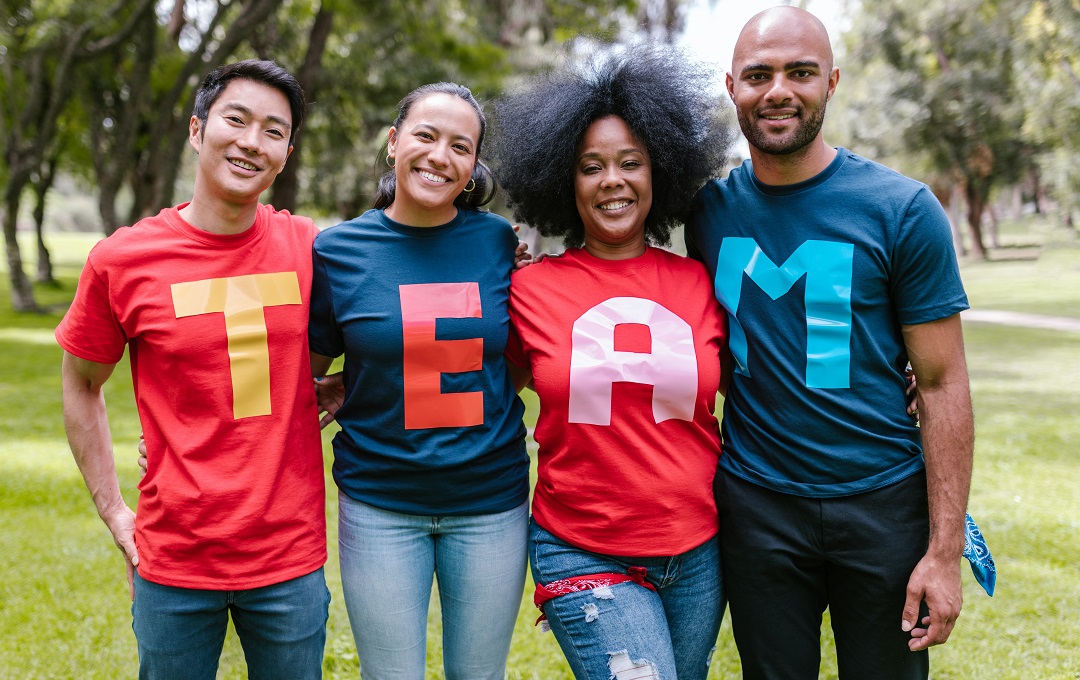Lack of diversity in the workplace can destroy a business. It leads to higher turnover and a toxic work environment. Worse yet, employees often feel reluctant to report discrimination if they have no allies.
Conflicts arise, respect is lost, and prejudices are overlooked when inclusion is not considered. Clearly, businesses lacking a diverse workforce are truly setting themselves up for failure.
Fortunately, creating a diverse team and understanding individual strengths can effectively address these challenges. By utilizing tools like the HIGH5 strengths assessment, businesses can gain valuable insights into their employees’ unique talents, fostering a more inclusive and diverse workplace.
This article outlines the benefits of workplace diversity, how you can implement inclusion techniques, and how leveraging individual strengths can significantly benefit your business.
What is Diversity? Definition
A diverse workforce is one that consists of a team of diverse individuals. It mirrors the many unique cultures of the society it operates in.
A truly diverse workplace incorporates a vast array of different human characteristics. Usually, these characteristics include gender, race, ethnicity, age, social status, religion, sexuality, and so on.
In the United States, employees are protected against discrimination by the Equal Employment Opportunity Commission.
The government ensures employers can not discriminate based on race, color, religion, sex, sexual identity, political affiliation, age, disability, and other non-merit factors.
Gaps in diversity can go unnoticed by managers, especially when diversity is viewed solely through a physical lens. However, true diversity encompasses a wide range of perspectives and talents. The HIGH5 strengths assessment can be a powerful tool in uncovering this ‘diversity of thought’ by identifying each team member’s unique strengths. This approach not only broadens the understanding of diversity but also helps managers appreciate and leverage the full spectrum of talents within their team.
Using data and surveys can help companies collect information to access current diversity. One of the key benefits of having an ethnically diverse team is higher revenues.
Additionally, there is a correlation between increased racial diversity in leadership positions and additional revenue.
Since each executive has their own strengths and unique leadership qualities, the leaders can focus on a particular task to perform it perfectly instead of being a jack of all trades.
Conflict management becomes simpler when employees have allies of a similar background defending them against potential harassment.
Certain races and genders may be signaled out, but having similar coworkers makes defending oneself significantly easier.
Businesses can attract more highly qualified candidates if they are viewed as diverse. Up to 72% of women, 89% of African Americans, and 70% of Latinos stated that diversity was important to them in a Glassdoor survey.
This is so since many job seekers wish to work with employers whose beliefs align with theirs. Other benefits can also be an increase in innovation, appealing to a larger market, higher workplace satisfaction, and more customers.
Pro Tip From HIGH5
When building your team, look beyond traditional diversity markers. Use tools like the HIGH5 strengths assessment to identify and celebrate the diverse strengths within your team. This approach can lead to more innovative problem-solving and a more inclusive work environment where everyone’s unique talents are valued.
Diversity and Inclusion in the Workplace and Why it is Important
Diverse and inclusive businesses ensure their employees are always involved and supported in their work, no matter what they do for the business.
The importance of D&I comes from their ability to improve a business.
Research has proven that businesses focusing on these two concepts have higher revenues and profits, are more innovative, have access to a larger talent pool, and retain more employees.
Being treated fairly at work leads to employees looking forward to work and being proud of their job. Plus, diverse brands are more appealing to job seekers.
With diversity and inclusion often comes a drop of harassment rates and proper identification of inappropriate behavior.
Minority workers feel empowered to speak out against abuse if their opinion is valued through inclusion.
Then, managers can use negative punishment (removal of pleasant activities or objects) or positive punishment (introduction of negative consequences to discourage behaviors) to address such unkind actions.
Diversity and inclusion create an ideal setting for innovation and creativity by allowing employees to feel comfortable being their authentic selves. The HIGH5 strengths assessment plays a crucial role in this process by helping individuals identify and embrace their unique strengths. When employees understand and appreciate their own strengths and those of their colleagues, it fosters a more inclusive environment where diverse perspectives are not just tolerated, but actively sought out and valued. This strength-aware approach to diversity and inclusion can significantly boost innovation and creativity within the organization.
This confident attitude improves the employees’ well being and allows the company to be viewed in a positive manner.
Inclusion allows the employee to focus on the tasks at hand instead of having to stress about inequitable access to resources or inappropriate behavior from coworkers.
Pro Tip From HIGH5
Encourage team members to share their top strengths identified through the HIGH5 assessment during brainstorming sessions. This practice can lead to more diverse ideas and innovative solutions, as team members learn to approach problems from the perspective of their unique strengths.
Diversity and Inclusion Strategies in the Workplace
Understand and acknowledge biases. Even if the opinion is subconscious, bias plays a huge role in promoting D&I.
By understanding bias, you can acknowledge possible favoritism toward a group and take action to prevent any disparity in opportunity.
Acknowledge all employees’ successes and unique contributions. One effective way to do this is by utilizing the HIGH5 strengths assessment to identify and celebrate each individual’s top strengths. By pointing out specific skills and talents revealed through the assessment, you can boost an employee’s self-worth and ensure they feel truly seen and valued. This strengths-based approach to recognition ensures that employees feel engaged, encouraged, and motivated to apply their unique talents in their roles, fostering a more inclusive and productive work environment, which is also confirmed in our latest research on a employee recognition.
Pointing out success is especially important to individuals who have had to overcome tremendous obstacles, like minorities.
Introducing rewards with positive reinforcement or removing negative stimuli through negative reinforcement helps encourage such positive behaviors.
It lets other minority employees see that individuals like them are achieving success and reaping rewards from that.
Create a welcoming environment. Leadership must commit to creating an organization that provides equal opportunities to all of its employees.
This means providing everyone with the same high-quality resources and mentorship as well as establishing efficient communication channels for everyone to utilize.
Encourage feedback. Listening to employees helps leaders address inequities in an organization.
It is ultimately employees who will benefit from diversity and inclusion, so asking for their opinion on current diversity efforts lets employees feel heard and appreciated while finding ways to increase D&I.
Cultural events help employers designate days to celebrate all genders, races, religions, etc.
Almost everyone feels celebrated and welcomed through a day designated to them.
Doing this also publicly displays your company’s support of inclusion and attracts more potential employees.
Pro Tip From HIGH5
Implement a recognition program that celebrates employees for leveraging their unique strengths identified through the HIGH5 assessment. This approach not only boosts morale but also reinforces the value of diversity in skills and perspectives within your organization.
Types of Diversity and Inclusion
Internal Diversity
This is the most physically noticeable type of diversity. It involves characteristics which are impossible to change and conditions a person is born with. Such examples include race, ethnicity, sexual orientation, physical and mental abilities, gender, age, and so on.
External Diversity
This term is used to describe aspects relating to an individual which are not characteristics they are born with. It is often influenced by outside sources in society.
However, these aspects can be changed over time. Examples of external diversity are education, appearance, citizenship, religion, location, marital status, personal interests, life experience, and socioeconomic status.
Organizational Diversity
Organizational diversity refers to diversity within an organization. It is the difference between every employee in a company.
This subcategory of diversity is also seen beyond the workplace. In any group, such as a nonprofit, government organization, private firm, or volunteer setting, organizational diversity should be utilized.
Subsets in organizational diversity include job location, employment status, position, salary, seniority, and union affiliation.
Worldview Diversity
The final type of diversity is referred to as worldview. This includes all the factors which contribute toward forming a worldview. All people have a worldview they align with, but it can change over time because of exposure to new ideas or experiences.
Worldview diversity encompasses political beliefs, moral understandings, outlook on living, and epistemology.
What is the Difference Between Diversity and Inclusion in the Workplace?
Although similar, diversity and inclusion are entirely different concepts.
Diversity refers to having a wide array of races, genders, ethnicities, ages, and religions being represented in an organization.
Inclusion ensures that the perspectives of each of these groups is valued and integrated into the workplace.
If a business has many races, nationalities, and sexual orientations present but only values the beliefs of certain groups, it is only diverse and not inclusive.
Why is Diversity and Inclusion Important to Businesses?
Focusing on diversity and inclusion empowers a workforce. Giving equal opportunities to everyone ensures all voices are heard and appreciated, leading to better communication within a team.
Through inclusion, managers get an insight into how every individual feels and workers feel valued when they are listened to.
By obtaining a diverse team and creating an inclusive company culture, businesses see an increase in employee satisfaction, high productivity and collaboration rates, empowered employees, effective problem solving, and company growth through innovation. In fact, the difference between inclusive and exclusive teams is also reflected in their revenue.
Inclusive teams outperform their competition by 80% when assessed for collaboration. Even if just 10% more employees felt included, the employer sees increased daily attendance from all employees leading to high productivity levels.
Additionally, inclusive and diverse businesses see a massive increase in cash flow.
Research performed by Deloitte and Josh Bergson reveals that inclusive businesses see 2.3 times the cash flow of their peers in a 3 year period. They also see better decision making occuring.
Companies which cater only to certain groups or fail to address inequities within the workplace are setting themselves up for losing cash and failing to get ahead in an innovative climate.
By addressing the needs of all employees and recognizing their individual strengths, businesses can reap significant benefits. The HIGH5 strengths assessment provides a framework for understanding and leveraging each employee’s unique talents, leading to increased innovation and a more positive company culture. When employees feel that their strengths are valued and utilized, they’re more likely to engage fully in their work, contribute diverse perspectives, and drive the company forward. This strengths-based approach to diversity and inclusion not only enhances employee satisfaction but also directly contributes to the company’s bottom line through improved performance and innovation.
Diversity & Inclusion FAQs
What is meant by diversity and inclusion?
Diversity involves having a team made of individuals from different backgrounds. They may be a different race, gender, sexual orientation, ethnicity, or religion from one another.
Diversity of thought and ideas is also crucial. Inclusion involves ensuring that all team members feel safe and respected within the workplace. Everyone should feel like their opinion matters and their voice is heard.
What are the 7 pillars of inclusion?
The first pillar of inclusion is to ensure that everyone has equal access to company resources and opportunities. Next, you should ensure that attitudes are as equal as possible to every employee.
No one should feel judged for something they cannot control. Then, all individuals should be given the same choices and paths to pursue. You must ensure all employees feel like they have partners and colleagues around them to support them.
Fifthly, communication should be emphasized. If someone feels discriminated against, make sure the victim can report the offender.
You should also add a policy of no discrimination and add consequences for those that break the rules. Finally, you must invest in all employees’ growth, not just some.
Conclusion
Diversity and inclusion play a key role in an employee’s happiness, productivity, and outlook on their career.
It prevents unnecessary conflicts in the workplace and increases a company’s profits and chance at success.
By establishing a diverse and inclusive company culture, brands help support their employees and maximize their odds at thriving in today’s competitive environment.
Organizations which realize the importance of D&I are also more appealing to job seekers.
It is crucial to recognize that having a diverse and inclusive environment is not optional – it is necessary for full employee satisfaction and company success.
Related articles:







